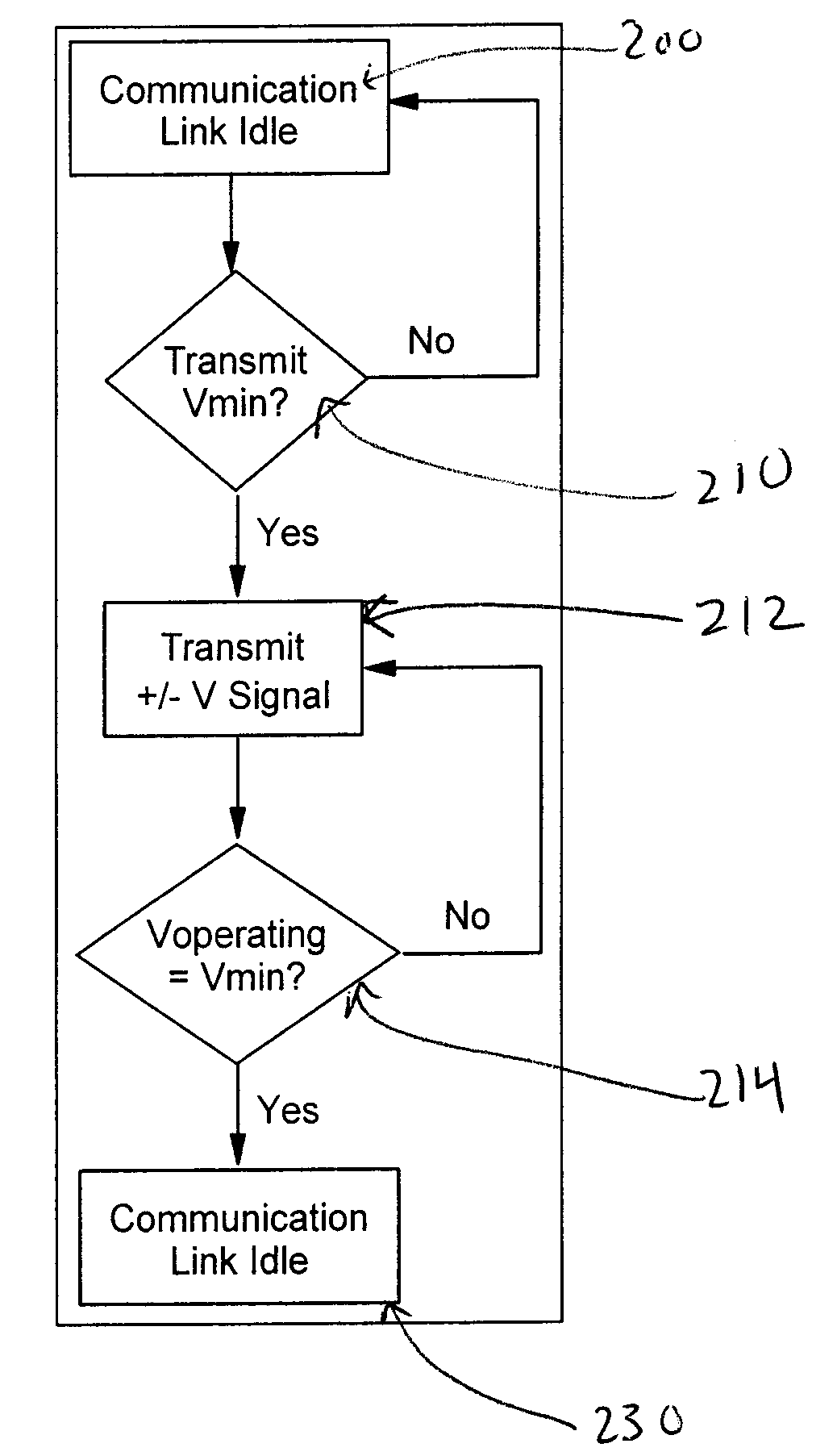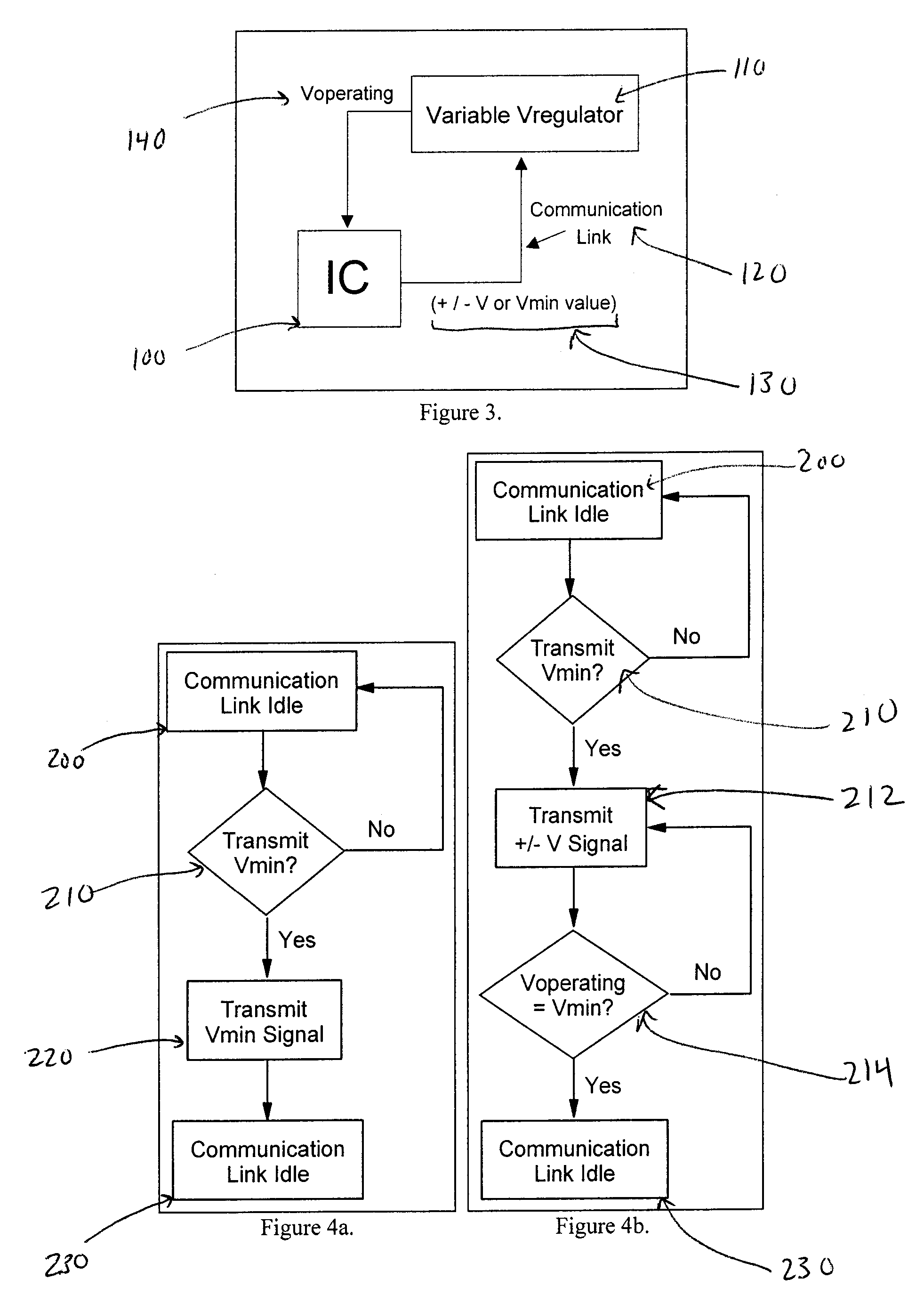System and method of controlling power consumption in an electronic system by applying a uniquely determined minimum operating voltage to an integrated circuit rather than a predetermined nominal voltage selected for a family of integrated circuits
a technology of integrated circuits and power consumption, applied in the direction of testing circuits, instruments, electric devices, etc., can solve the problems of power consumption becoming a major obstacle for circuit and system designers, power management problems for system designers, and power management problems taking form
- Summary
- Abstract
- Description
- Claims
- Application Information
AI Technical Summary
Benefits of technology
Problems solved by technology
Method used
Image
Examples
second embodiment
[0048]FIG. 5 illustrates a second embodiment where IC 302 is capable of self-testing, which is performed by a built-in-self-test (“BIST”) engine, so that Vmin may be determined while the IC is in the end system. Preferably, self-testing is performed during IC initialization in order to minimize potential system interruption. This may occur during each IC initialization or may occur at some interval of initializations (e.g. every 10th initialization, self-testing is performed). Self-testing may be performed during normal operating conditions or any other time when the IC is in the end system (e.g. idle state). In addition to optimizing power consumption, this embodiment also provides a means for adjusting the operating voltage of an IC throughout its useful life. As is well know in the art, IC performance degrades over time as a result of reliability wearout mechanisms. For example, IC performance will decrease as a result of hot electron degradation which causes damage at the gate / d...
third embodiment
[0058]FIG. 9 illustrates a third embodiment where system temperature may be utilized to reduce the operating voltage of an IC, and thus, power consumption. Because the operating frequency of an IC is inversely related to temperature, an IC tested at worst-case system operating temperature, but which is actually operating at some temperature below that condition, may be operated at a lower voltage and still satisfy the system performance requirements. The end system contains temperature monitoring system 500 (e.g. thermal couple, thermal monitor, etc.) that is capable of measuring the temperature of the system near IC 502 and transmitting that temperature data to the IC for processing 504. In an alternate embodiment, a temperature sensing mechanism is contained within the IC. Techniques for measuring temperature using devices contained within semiconductor circuits are well known and described more fully in U.S. Pat. No. 3,881,181 entitled SEMICONDUCTOR TEMPERATURE SENSOR, by Khajeza...
PUM
 Login to View More
Login to View More Abstract
Description
Claims
Application Information
 Login to View More
Login to View More - R&D
- Intellectual Property
- Life Sciences
- Materials
- Tech Scout
- Unparalleled Data Quality
- Higher Quality Content
- 60% Fewer Hallucinations
Browse by: Latest US Patents, China's latest patents, Technical Efficacy Thesaurus, Application Domain, Technology Topic, Popular Technical Reports.
© 2025 PatSnap. All rights reserved.Legal|Privacy policy|Modern Slavery Act Transparency Statement|Sitemap|About US| Contact US: help@patsnap.com



